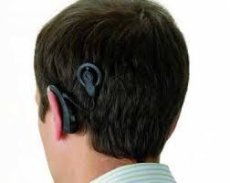Implants for the ears will help restore the auditory nerves
Last reviewed: 23.04.2024

All iLive content is medically reviewed or fact checked to ensure as much factual accuracy as possible.
We have strict sourcing guidelines and only link to reputable media sites, academic research institutions and, whenever possible, medically peer reviewed studies. Note that the numbers in parentheses ([1], [2], etc.) are clickable links to these studies.
If you feel that any of our content is inaccurate, out-of-date, or otherwise questionable, please select it and press Ctrl + Enter.

For the first time in medical practice, specialists applied a cochlear implant for gene therapy of hearing. This device allows you to restore the auditory nerves, which ultimately significantly improves hearing. However, according to experts dangnaya methodata can be used not only for hearing correction, but for the treatment of neurological and mental diseases.
The gene therapy method is to deliver the neurotrophin (a protein important for the development and proper functioning of neurons) to the organs of hearing. This method caused enough difficulties for specialists, since the delivery of neurotrophins could not be done with the help of medications. Therefore, scientists decided to use cochlear implants for these purposes.
The implant emits electrical impulses, through which DNA is delivered to cells to stimulate the production of neurotrophins. The implant consists of two parts - internal and external. The inner part is equipped with a transmitter inserted into the mastoid bone located behind the ear and the electrodes that connect to the cochlea of the ear. The outer part contains a microphone and a speech processing unit. Any sound that is picked up by the external part, by means of electrical signals, flows through the electrodes to the inner part, where the auditory nerves stimulate and send a signal to the brain, perceived as sound. Simultaneously, the gene therapy method starts the process of repair of auditory cells.
As a result, a person gets the ability to hear a significant range of sounds. As a result of a two-month study of the new device, the production of neurotrophins decreased, but changes in the auditory nerves can be maintained with an implant providing neuronal activity.
Lead expert Jim Patrick, who also provided financial assistance to the research project, noted that cochlear devices have a pretty big future, and now more than 300,000 people use them around the world. One of the authors of the research project, Harry Hawesley, also noted that people using hearing aids have a sound perception range lower, so they can not, for example, enjoy music in full. Therefore, a new cochlear device should help people with hearing problems hear more sounds around themselves.
When installing a cochlear apparatus, a solution of DNA will be placed by the surgeon into the cochlea of the inner ear, after the activation of electrical pulses, the DNA transfer process will be started. However, this technique is suitable not only for hearing correction. For example, scientists suggest that it can be used to treat other disorders, such as depression or Parkinson's disease. According to scientists, the use of such gene therapy is safer and has a directional effect.
Gene therapy can be used to treat serious neurological disorders, this method allows efficient delivery of genes to tissues (including the brain) with minimal side effects. Earlier, the Oxford research group reported that gene therapy can be successfully used to restore vision in blindness.


 [
[